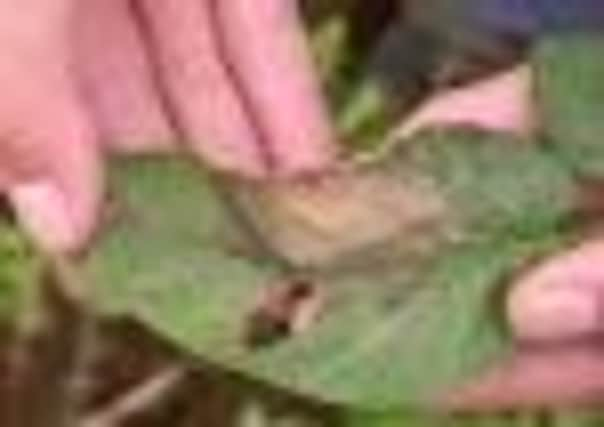Gardening: humble spud under threat


Among the crops worst hit in vegetable patches across the country is the humble spud, a staple of the British menu for centuries, whether boiled, mashed or chipped.
Experts are now warning that gardeners must start to grow a mixture of varieties to stem the loss of crops to late blight.
Advertisement
Hide AdAdvertisement
Hide AdAffected plants develop brown spots, especially around the edges of the leaves, the stems turn brown and potatoes develop scabby cankers that lead to brown patches inside the tubers which soon rot.
Bob Sherman, chief horticultural officer of charity Garden Organic, warns: “Rare types of potatoes are under threat. There isn’t much that the amateur gardener can do to protect potatoes from blight.
“Late blight is a very rapidly evolving organism. It’s not quite a fungus. It’s quite closely related to seaweed, but it acts like a fungus. Spores flow about in the air, usually coming from old tubers left in the soil which haven’t been harvested from the previous year because they’ve been missed.
“Most of the old varieties of potato are highly susceptible and even ones that were thought to be resistant have succumbed to new strains of the disease. We used to think that ‘Cara’ was blight resistant, but it isn’t any more. A whole range of interesting textures and flavours from old varieties are under threat.”
Advertisement
Hide AdAdvertisement
Hide AdIncessant wet weather causes both disease and physical problems with potatoes, he continues. The tubers can’t be lifted because the ground’s too heavy and soggy.
“When potatoes get too much moisture, you might get one or two huge potatoes under the soil instead of a nice little clump of medium-sized tubers. The huge ones might be hollow inside or just not very tasty. Dry weather tends to enhance flavour, but wet weather reduces it.”
Late potato blight has been the scourge of crops during excessive wet weather, he says.
However, some gardeners have turned to a resistant variety which is keeping blight at bay.
Advertisement
Hide AdAdvertisement
Hide AdDavid Shaw, research director of the not-for-profit Sarvari Research Trust in North Wales, and his team developed a range of blight-resistant ‘superspuds’ known as Sarpos (pronounced Sharpo), first bred by the Hungarian Sarvari family.
Available in red, white and blue, from Thompson & Morgan and some garden centres, they are now being grown by gardeners who don’t want the plight of blight.
“The disease evolves all the time, a bit like flu, so there’s always a new strain. The Sarpo varieties David Shaw has been working with seem to be coping with all the changes that the disease is going through,” says Sherman.
“Some of them will get signs of blight in the leaves, but not in the tubers.”
Advertisement
Hide AdAdvertisement
Hide AdHe suggests growing a number of different varieties so that you’re covered if the tubers, which are highly susceptible, succumb to blight.
“The other advice is to harvest earlier,” he suggests. “You might sacrifice the weight of the potatoes, but the flavour will be good.”
Alternatively, grow spuds in pots and bring them under cover later in the year. Blight usually strikes from July onwards, depending on the weather and which part of the country you live in.
Of course you can enrich your soil with plenty of organic matter, but if the weather’s damp, it won’t make any difference to blight, because the spores are carried in the air.
Advertisement
Hide AdAdvertisement
Hide AdCovering the plants with tunnels or cloches may also not make a difference because potatoes need good air flow. If your tunnels are plastic, blight will thrive in the humidity. If you have a good-sized greenhouse, you may have more luck if you constantly remove the leaves showing signs of blight.
If the blight is widespread, take all the leaves off, which will mean a smaller crop, but at least you’ll have a crop.
However, if you do remove leaves, don’t lift any potatoes for at least two weeks afterwards, because the spores will still be on the surface of the soil, and if they come into contact with a tuber, they will affect it.
And if anyone has problems with slugs ruining their potatoes, Sarpo Mira and Sarpo Axona both have good slug resistance to go with blight resistance.
Try mixing crops, growing sweet potatoes or yacon, a perennial tuber from South America which looks like a potato and is not so susceptible to common pests and diseases.